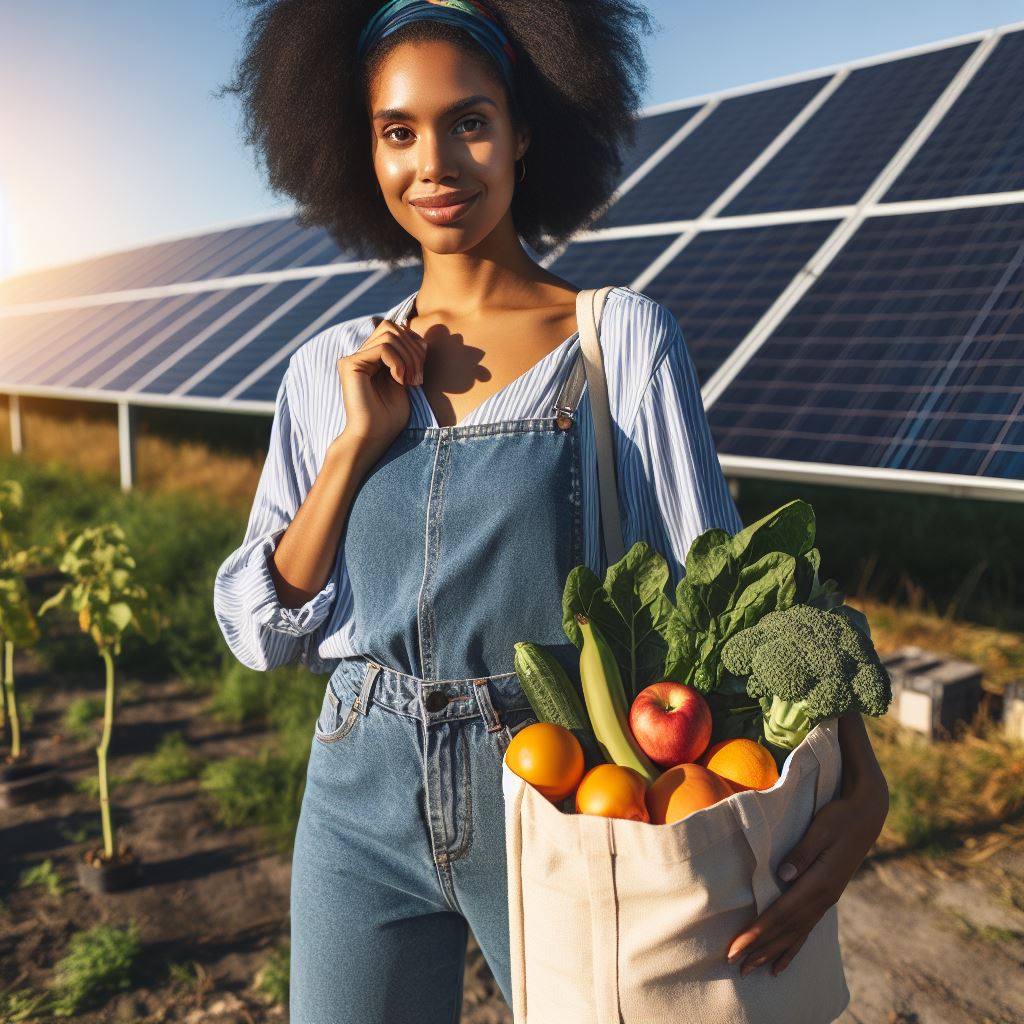Sustainability, in the context of lifestyle products sustainable, refers to creating and using goods that meet present needs without compromising the ability of future generations to meet their own needs. It encompasses a product’s entire lifecycle, from design and manufacturing to usage and disposal, ensuring minimal environmental impact. Sustainable products are typically made from renewable or recycled materials, have a longer lifespan, and are designed to be reused, repaired, or recycled.
Choosing sustainable products is crucial for both environmental and health benefits. Environmentally, they help reduce pollution, conserve natural resources, and mitigate the effects of climate change by minimizing waste and carbon emissions. Health-wise, sustainable products often avoid harmful chemicals and toxins found in conventional goods, leading to a safer living environment. Additionally, they support the circular economy, promoting a system of reuse and recycling that reduces the need for new materials and decreases overall waste.
Embracing sustainability in our daily lives through the products we choose can have a profound impact on both the planet and our well-being. It’s a step towards a healthier, more responsible, and environmentally conscious lifestyle.
The Life Cycle of Sustainable lifestyle Products
The life cycle of a lifestyle products sustainable encompasses several stages, starting from the extraction of raw materials to the final disposal or recycling of the product.
Here’s a breakdown of the stages:
- Design: This is where the sustainability of a product begins. Products are designed with consideration for environmental impact, using eco-friendly materials and methods.
- Raw Material Extraction: Sustainable products use materials that are renewable or have a low environmental impact. The extraction process is also designed to minimize harm to ecosystems.
- Manufacturing: The production process aims to be energy-efficient and to minimize waste. It often involves using renewable energy sources and recycling water and materials.
- Distribution: Sustainable products are transported in a way that reduces carbon emissions, often through optimized logistics and eco-friendly packaging.
- Usage: These products are designed to be durable and energy-efficient during their use, reducing the overall environmental footprint over time.
- End-of-Life: The disposal of sustainable products involves biodegradability or recyclability. Biodegradable products can decompose naturally, returning nutrients to the earth and reducing landfill waste. Recyclable products can be reprocessed into new products, conserving resources and energy.
How can I dispose of sustainable products properly?
Proper disposal of lifestyle products sustainable is essential to ensure that the environmental benefits they provide are not negated at the end of their life cycle.
Here are some general guidelines for disposing of sustainable products responsibly:
- Reduce, Reuse, Recycle: The most fundamental principles of eco-friendly disposal involve reducing consumption, reusing items, and recycling materials.
- Composting: For biodegradable products, especially organic waste like food scraps, composting is an excellent way to return nutrients to the soil and reduce landfill waste.
- Hazardous Waste: Dispose of hazardous materials, such as batteries and CFL bulbs, at designated collection sites to prevent environmental contamination.
- Recycling: Recycle materials like paper, metals, glass, and certain plastics according to local recycling guidelines.
- Donating: Gently used items can be donated to extend their life and keep them out of landfills.
- Eco-Friendly Alternatives: Choose products made from recycled, organic, or sustainably-sourced materials.
- Energy Conservation: Use energy-efficient appliances and opt for LED lighting to reduce energy consumption.
- Sustainable Cleaning: Use non-toxic, eco-friendly cleaning products or create DIY cleaning solutions from natural ingredients.
- Proper Separation: Separate biodegradable products from non-biodegradable items to facilitate easier sorting and processing during waste management.
Materials Matter: Bamboo, Copper, and Beyond
In today’s world, where eco-consciousness is at the forefront, the materials we choose for our homes and everyday lives play a significant role. This goes beyond just aesthetics; it’s about making sustainable choices that benefit both us and the planet.
The Allure of Bamboo:
Bamboo has emerged as a superstar in the sustainable materials scene. Here’s why:
- Rapidly Renewable: Unlike trees, bamboo grows incredibly fast, making it a highly renewable resource. This reduces pressure on deforestation and ensures a steady supply.
- Durable and Strong: Don’t be fooled by its fast growth – bamboo is surprisingly strong and durable. It can be used for furniture, flooring, and even building materials.
- Naturally Beautiful: Bamboo boasts a warm, golden hue and rich grain patterns, adding a touch of organic elegance to any space.
- Low Maintenance: Bamboo requires minimal maintenance compared to other materials. Regular dusting and occasional wiping keep it looking its best.
The Enduring Power of Copper:
Copper isn’t just a beautiful reddish metal; it offers a surprising number of environmental benefits:
- Recycling Champion: Copper holds the title of one of the most recyclable materials on Earth. It can be recycled endlessly without losing its properties, reducing reliance on virgin copper mining.
- Energy Efficiency: Copper’s excellent thermal and electrical conductivity make it a key player in energy-saving technologies. Copper wiring in buildings and appliances minimizes energy loss during transmission.
- Durable and Long-lasting: Copper is naturally strong and resistant to corrosion. This translates to long-lasting products, reducing waste associated with frequent replacements.
- Antimicrobial Properties: Copper has inherent antimicrobial properties, which can help prevent the growth of bacteria on surfaces. This makes it a valuable material for doorknobs and other frequently touched surfaces in public places.
Looking Beyond Bamboo and Copper:
While bamboo and copper are excellent choices, the world of sustainable materials is vast and ever-evolving. Here are some other options to consider:
- Recycled Materials: Products made from recycled plastic, glass, or metal offer a second life to waste materials, reducing reliance on virgin resources.
- Cork: This natural material harvested from cork oak trees is not only beautiful but also sustainable and fire-resistant.
- Linen: Made from flax plants, linen is a natural and durable fabric choice for clothing, bedding, and other textiles.
- Wool: Sustainable wool production practices exist, and wool offers excellent insulation and natural flame resistance.
What are some common mistakes people make when disposing of products?
Here are some common mistakes people make when disposing of products:
- Not Recycling Properly: This is a big one! People often toss recyclable items in the trash because they’re not sure what can be recycled in their area, or they forget to clean out containers first. Food residue or liquids can contaminate a whole batch of recyclables.
- Not Knowing Local Recycling Guidelines: Recycling rules can vary depending on your location. Some areas might accept certain plastics while others don’t. It’s crucial to check with your local waste management company to understand what goes in which bin.
- Throwing Hazardous Waste in Regular Trash: Items like batteries, paint, cleaning chemicals, and medications should never be thrown in the regular trash. These materials can be harmful to the environment and human health if not disposed of properly. Look for designated hazardous waste drop-off locations in your area.
- Wishful Recycling: Just because something has a recycling symbol on it doesn’t necessarily mean your local program accepts it. Always double-check before tossing something in the recycling bin.
- Not Disposing of Electronics Properly: E-waste (electronic waste) contains hazardous materials that can leach into the environment if not disposed of responsibly. Many electronics retailers and manufacturers offer take-back programs for old electronics.
- Not Reusing or Repurposing: Before throwing something away, consider if it can be reused or repurposed. Old clothes can be turned into cleaning rags, glass jars can be used for storage, and furniture can be given a new life with a fresh coat of paint.
- Landfilling Compostable Materials: Food scraps and yard waste take up a significant amount of space in landfills and release methane, a potent greenhouse gas, as they decompose. Composting these materials at home or using curbside composting programs (if available) is a much more sustainable option.
Conclusion
Sustainability in lifestyle products sustainable is about making choices that are beneficial for both the environment and our health. It involves selecting items that are designed with eco-friendly materials, have a minimal environmental footprint during their lifecycle, and can be disposed of responsibly through bio-degradation or recycling. By opting for sustainable products, we contribute to the conservation of natural resources, reduction of pollution, and support for a circular economy.
As consumers, we have the power to drive change by making informed decisions about the products we use daily. By choosing sustainability, we not only protect the planet but also ensure a healthier living environment for ourselves and future generations. Let’s take action by embracing sustainable products, spreading awareness, and encouraging others to join us in this important movement towards a greener, more responsible lifestyle. Remember, every small step counts in making a big difference.











